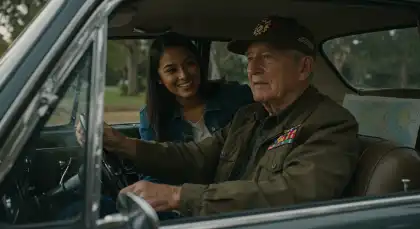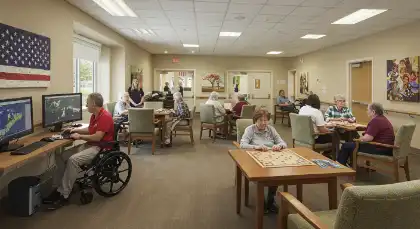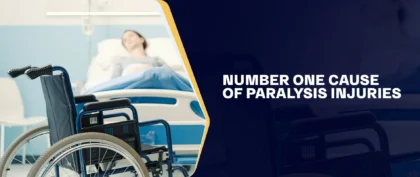Table of Contents
From Combat Zones to Civilian Streets: A Veteran’s Guide to Safer Driving with PTSD Support, Adaptive Equipment, and Legal Know-How
For the approximately 18 million U.S. veterans, adjusting to civilian life presents numerous challenges, with driving being one of the most immediate and frequent obstacles. Research shows that many veterans report experiencing driving-related anxiety following deployment.
Defensive and aggressive driving techniques necessary in high-pressure combat zones may no longer be appropriate on U.S. roads. For example, Dr. Steve Woodward of the U.S. Department of Veterans Affairs (VA) explained that the military taught veterans to avoid the sides of roads. This helps explain why some returning veterans drive in the center of the road.
Furthermore, combat veterans often exhibit heightened vigilance, quick reaction times, and conditioned responses to perceived threats — characteristics that can contribute to stress or unsafe driving behaviors in everyday traffic. Recognizing these challenges is the first step toward safer driving. Each veteran should assess their specific physical and emotional needs to determine the most effective adaptations for their driving abilities.
Arash Law salutes our veterans. To provide them with a helpful resource for reintegrating into civilian life, we’ve developed this comprehensive driving guide that addresses the unique challenges veterans face on the road and offers practical solutions to support a safe transition to civilian driving.
Recognizing The Challenges Veterans Face When Driving
Many veterans face unique driving-related challenges. Some face physical disabilities that limit mobility or coordination. In contrast, others struggle with mental health conditions like post-traumatic stress disorder (PTSD) that may affect concentration and emotional regulation behind the wheel. Understanding these specific challenges is the first step toward safer driving:
Physical Challenges
Injuries sustained during deployment, whether from combat or training, can leave lasting effects on mobility and overall physical health. These challenges may require former service members to adjust their driving habits or seek specialized equipment to ensure their safety on the road.
- Mobility Issues — Veterans with mobility limitations from amputations, joint pain, or other physical injuries should assess their specific needs when considering vehicle modifications. Adaptive equipment such as hand controls for acceleration and braking or specialized seating can significantly improve driving comfort and control. With the proper modifications, veterans maintain independence and drive safely despite physical limitations.
- Vision Impairment — Combat-related eye injuries can result in blurred vision, reduced peripheral sight, or partial blindness, making it difficult to read road signs, detect hazards, or judge distances accurately. These vision challenges become particularly problematic in complex driving situations such as navigating busy intersections or driving at night. Veterans with vision impairments benefit from specialized tools like larger mirrors, enhanced vehicle lighting, and GPS systems with voice commands to help prevent intersection accidents and other high-risk scenarios.
Mental And Emotional Challenges
The stress and trauma experienced during their service can carry over into their civilian lives, making routine activities like driving more difficult. Mental health challenges and emotional trauma can impact how a person functions in daily situations and handles stress. Some veterans may benefit from assessing their mental health status and seeking support to navigate the challenges of driving safely.
- Mental Health Issues — According to the Department of Veteran Affairs, 11% to 20% of veterans who served in Iraq and Afghanistan experience PTSD, which can significantly impact driving abilities. PTSD, anxiety, and depression affect focus, decision-making, and reaction time, which are all critical skills for safe driving. Many veterans report heightened anxiety in traffic situations like sudden lane changes or heavy congestion, leading to avoidance behaviors or emotional distress.
- Emotional Trauma — Combat experiences can create lasting emotional responses that unexpectedly manifest while driving. Many veterans report experiencing driving-related triggers such as roadside debris, tunnels, or overpasses that resemble areas where improvised explosive devices were common in combat zones. Loud noises like car backfiring or the confinement of heavy traffic can trigger intense emotional reactions, making driving overwhelming without proper coping strategies.
Cognitive Impairments
Some veterans may experience cognitive impairments due to conditions like traumatic brain injury (TBI) or the side effects of medications for physical or mental health issues. These impairments can affect a person’s ability to drive safely, making it more difficult to navigate everyday traffic situations.
- Traumatic Brain Injury — According to the Defense and Veterans Brain Injury Center, over 400,000 service members were diagnosed with TBI between 2000 and 2019. Veterans with TBI often experience memory deficits, difficulty maintaining focus, and impaired decision-making. These cognitive challenges can make following directions, remembering routes, or responding to changing traffic conditions significantly more difficult, increasing accident risk. Depending on severity, veterans with TBI may need specialized driving assessments to determine their readiness to operate a vehicle safely.
- Medication Side Effects — Some veterans may be taking multiple medications to manage service-related conditions. Common medications for PTSD, depression, and pain can cause drowsiness, blurred vision, or slowed reaction time. These side effects can delay responses to traffic signals, impair lane control, and significantly increase accident risk. Veterans should discuss all medications with their healthcare providers to understand potential driving impairments and optimal timing for medication use.
Understanding and managing cognitive challenges related to brain injuries is essential for safe driving. With proper assessments, support, and self-awareness, veterans can reduce accident risk and maintain greater independence on the road.
Preparing To Drive Safely As A Veteran
Before returning to regular driving, veterans should complete a comprehensive preparation process that addresses their specific needs. This process typically involves four key steps:
- Assessing current physical and cognitive abilities.
- Implementing appropriate vehicle modifications.
- Completing specialized driver training.
- Developing personalized strategies for managing challenging driving situations.
Vehicle Modifications And Adaptive Equipment
Veterans should consider specific vehicle modifications that enhance accessibility and safety based on their individual needs. These adjustments help overcome mobility challenges and create a more comfortable, controlled driving experience. Proper installation and maintenance of these modifications prevent equipment failures from auto defects that could compromise safety.
Common vehicle modifications include:
- Hand Controls — These allow veterans with limited lower body mobility to accelerate and brake using their hands instead of traditional foot pedals. Hand controls benefit those with amputations, spinal cord injuries, or other lower-body disabilities by providing precise vehicle control without requiring leg function.
- Pedal Extensions — These modifications increase the range of motion for veterans with leg impairments or limited lower extremity mobility. By bringing the pedals closer to the driver, extensions allow smooth vehicle operation without causing strain or discomfort during longer drives.
- Specialized Seats — Adapted seats assist veterans with mobility challenges through features like swiveling or lifting mechanisms that make entering and exiting the vehicle easier. These seats provide optimal support and comfort for veterans with back injuries, arthritis, or other conditions that limit movement, reducing pain during driving.
- Steering Wheel Adjustments — Veterans with arm or hand impairments benefit from steering wheel modifications such as knobs, grips, or specialized hand controls. These adjustments improve vehicle control even with limited dexterity or strength in the hands or arms, making steering more precise and less physically demanding.
Veterans who implement appropriate adaptive equipment can drive with greater confidence, control, and independence. These modifications not only improve accessibility but also enhance safety and help prevent motor vehicle accidents by ensuring drivers can effectively respond to road conditions and potential hazards.
Driver Training And Rehabilitation
Before resuming regular driving, veterans should thoroughly assess their physical and mental readiness for the road. Many benefit from professional evaluations that identify specific areas for improvement and adaptation.
Follow these steps to prepare for safe driving:
- Consulting A Driving Rehabilitation Specialist — The Association for Driver Rehabilitation Specialists (ADED) can connect veterans with certified professionals who evaluate driving capabilities and recommend appropriate vehicle modifications. These specialists have specialized training to identify challenges and provide personalized solutions for safe, independent driving.
- Complete Customized Driving Lessons — Programs like the VA’s Driver Rehabilitation Program offer tailored instruction to help veterans transition from military to civilian driving. These specialized lessons focus on individual needs and abilities, gradually building confidence while addressing specific challenges related to physical limitations or combat-related reactions.
- Undergo Medical Evaluation — Before returning to driving, veterans should complete a comprehensive medical assessment with healthcare providers familiar with combat-related conditions. This evaluation should address physical injuries, mental health conditions such as PTSD or TBI, and medication effects that might impact driving safety.
Tips For Driving Safely Post-Deployment
Transitioning from military to civilian roads can be challenging, as habits formed in high-stress environments may not suit everyday driving. The following sections will cover several tips to help returning veterans adjust to civilian driving after deployment. These tips help address the unique challenges they may face on the road, from managing speed and seatbelt safety to handling aggressive driving and emotional triggers.
Adjust To Speed Limits And Driving Habits
Military driving often involves different speed regulations than civilian roads, making speed adjustment challenging for recently returned veterans. Research shows that many combat veterans report difficulties adjusting to civilian speed limits during the first six months after deployment.
Implement these strategies to manage speed effectively and prevent speeding-related accidents:
- Actively Monitor Speed Limits — Verbalize each speed limit sign you see and immediately check your speedometer to ensure compliance. When highway driving is appropriate, use cruise control to maintain consistent speeds and prevent unintentional speeding.
- Use Positive Self-Talk — Reinforce safe driving behavior with statements like:
- “As a military member, I set the example for safe driving.”
- “Maintaining proper speed protects everyone on the road.”
- “The few minutes saved by speeding aren’t worth the risks.”
- Gradually Increase Driving Speed — If adjusting to higher speeds feels challenging, try this systematic approach:
- Begin with 25-35 mph residential roads for the first week.
- Progress to 35-40 mph multi-lane roads in the second week.
- Advance to 45-60 mph highways after building confidence.
- Finally, drive on 60-70 mph multi-lane highways when comfortable.
By carefully monitoring speed, staying patient, and practicing controlled driving, veterans can minimize the risk of common incidents like failure-to-yield accidents and better adapt to civilian traffic environments.
Seatbelt Safety And Comfort
Many veterans develop habits during deployment that conflict with civilian safety practices. According to the Army’s top safety officer, every fatal on-duty ground tactical vehicle accident since 2018 shares a common factor: in each case, the soldier who died was either not wearing a seatbelt or didn’t have access to a functional one.
However, research from the National Highway Traffic Safety Administration (NHTSA) reports that seatbelts reduce catastrophic injuries and deaths by approximately 50%. In fact, consistently wearing a seatbelt is one of the most effective steps drivers and passengers can take to avoid fatal car accidents.
Implement these strategies to overcome seatbelt resistance:
- Create A Pre-Drive Routine — Before starting the vehicle, explicitly state, “The first step is buckling up.” This verbal reminder establishes a consistent safety pattern. Encourage passengers to participate by saying, “I’m securing my seatbelt; please make sure yours is fastened too.”
- Use Visual Reminders — Place a photo of loved ones or a simple note on the dashboard that reminds you why safety matters. These visual cues reinforce the importance of using safety equipment on every trip.
- Address Physical and Emotional Discomfort — If seatbelts trigger anxiety or physical discomfort:
- Take a moment to adjust your seating position before driving.
- Ensure your back is fully against the seat.
- Practice deep breathing while slowly fastening the seatbelt.
- Consider using padding or seatbelt adjusters for greater comfort.
Manage Aggression And Stay Calm On The Road
Combat driving experiences can create a heightened sense of vigilance and defensive driving that sometimes manifests as aggression on civilian roads. Studies indicate combat veterans report feelings of frustration or anger while driving during their first year after deployment. PTSD is associated with an increased risk of road rage.
Use these strategies to maintain calm and control:
Creating A Calm Driving Environment
- Close windows when driving in high-traffic or stressful areas to reduce external stimuli.
- Use calming music or audio programs that help maintain emotional balance.
- Place meaningful reminders like family photos or calming symbols within view.
- Consider using aromatherapy with stress-reducing scents like lavender or vanilla.
Cognitive Strategies For Emotional Regulation
- Practice perspective-shifting with statements like “Aggressive driving increases risk rather than reducing it” and “The safest position is away from dangerous drivers.”
- Identify when emotions are escalating and immediately implement calming techniques.
- Accept feedback from passengers about driving behavior without defensiveness.
- Practice yielding right-of-way even when technically entitled to it.
Instead of thinking, “Other drivers should respect my right to be in the left lane” or “Other drivers should give me more road space,” try to understand that everyone is trying to reach their destination safely. You can stay safe and in control if you keep your level-headed attitude behind the wheel.
Stay Calm Around Construction And Road Noises
For many veterans, particularly those who experienced combat, loud or unexpected noises can trigger a heightened stress response. These reactions can temporarily disrupt concentration and driving performance.
Implement these strategies to manage noise triggers effectively:
Environmental Modifications:
- Drive with windows closed in construction zones or high-traffic areas.
- Use the vehicle’s climate control rather than open windows when possible.
- Play preferred music at a moderate volume to mask external sounds.
- Select routes that avoid known construction zones or high-noise areas when possible.
Cognitive-Behavioral Techniques:
- Practice cognitive labeling by immediately identifying and naming sounds: “That’s just construction equipment, not an explosion” or “That’s just a truck backfiring.”
- When triggered, implement the “5-4-3-2-1” grounding technique: Identify five things you see, four things you feel, three things you hear, two things you smell, and one thing you taste.
- When feeling anxious, use deep breathing (4 counts in, hold for 2, 6 counts out).
- Separate military from civilian contexts by maintaining a civilian appearance while driving.
Veterans can progressively use these measures to minimize their sensitivity to loud noises and manage their anxiety when driving. With practice, driving can become a more relaxing and controlled experience.
Help For Veterans
Life after military service presents unique challenges, but numerous resources exist to support veterans transitioning to civilian life, including driving safety and independence. Consider these valuable resources as essential navigation tools for your journey:
- VA PTSD Care — The VA offers specialized PTSD treatment programs, including Cognitive Processing Therapy and Prolonged Exposure Therapy, both proven effective for combat-related trauma. Contact the Veterans Crisis Line at 988 (press 1) or visit www.ptsd.va.gov to find specialized care that can significantly improve driving focus and emotional regulation.
- Care For LGBTQ+ Veterans — The VA provides tailored mental health and PTSD support for LGBTQ+ veterans through programs like the LGBT Health Program. These services address unique stressors that might affect driving confidence. Connect through the LGBT Veteran Care Coordinator at your local VA or visit www.patientcare.va.gov/LGBT.
- Care For Women Veterans — Women veterans can access gender-specific healthcare services, including specialized PTSD and MST (Military Sexual Trauma) treatment programs that address factors affecting driving safety. Contact the Women Veterans Call Center at 1-855-VA-WOMEN (1-855-829-6636) or visit www.womenshealth.va.gov.
- Vet Centers — These 300+ community-based centers provide counseling and transition support in a non-clinical setting. Fellow veterans work at these centers and understand military-to-civilian transitions, including driving challenges. Find your nearest center at www.vetcenter.va.gov or call 1-877-WAR-VETS (1-877-927-8387).
- VA Mental Health Residential Rehabilitation Treatment — This intensive program addresses PTSD, depression, and substance use disorders that may impact driving safety. Programs typically run for 30 to 90 days and provide comprehensive care. Contact your local VA Medical Center for referral information.
- Military OneSource — This Department of Defense program offers free resources, including emotional health support, financial guidance, and disability resources for active duty, Guard, and Reserve members and their families for up to one year after separation. Call 1-800-342-9647 or visit www.militaryonesource.mil.
- Real Warriors Campaign — This initiative promotes psychological health by encouraging treatment-seeking and reducing stigma. Its resources include peer support and counseling that can improve emotional regulation while driving. Visit www.realwarriors.net or call the Psychological Health Resource Center at 1-866-966-1020.
Legal Considerations And Rights For Veterans After A Vehicle Accident
The most common cause of death among veterans who return home after deployment is motor vehicle crashes, according to VA research. If not fatal, these accidents may cause debilitating injuries. These incidents can be particularly challenging for veterans with service-related physical or psychological conditions. While veterans have the same legal rights as any citizen after an accident, their unique circumstances — including pre-existing conditions, VA healthcare coverage, and service-related disabilities — create special considerations. Understanding these factors helps veterans navigate post-accident processes more effectively and secure appropriate compensation.
Right To Medical Care
Veterans have multiple options for medical care following a vehicle accident. Understanding these options ensures timely and appropriate treatment:
VA Healthcare System:
- Veterans enrolled in VA healthcare can receive comprehensive medical services for accident-related injuries.
- VA-accredited hospitals and clinics provide immediate emergency care for accident injuries.
- For service-connected conditions worsened by an accident, veterans may qualify for increased disability ratings and benefits.
Coordination of Benefits:
- Veterans with private insurance and VA benefits must coordinate coverage to avoid billing complications.
- Private insurance often covers services unavailable through the VA system.
- The VA has specific coordination of benefits procedures for accident-related injuries involving third-party liability.
When seeking medical care after an accident, inform all providers about both VA and private insurance coverage to ensure proper billing and maximum benefit utilization.
Right To Legal Representation
Navigating personal injury claims requires specialized knowledge, particularly for veterans with pre-existing conditions. Professional legal representation by car accident lawyers ensures fair compensation and protection of veterans’ rights.
When selecting legal representation, veterans should:
- Choose attorneys with specific experience representing veterans in accident cases.
- Look for accident lawyers familiar with VA disability ratings and how they interact with injury claims.
- Seek personal injury lawyers who understand how combat-related conditions like PTSD may affect accident cases.
Right To Compensation
Veterans involved in vehicle accidents caused by another party’s negligence deserve full compensation for all resulting damages. For veterans, certain compensation aspects require special consideration. Here are some of the types of damages that you can claim:
Standard Compensation Categories:
- Medical Expenses — Coverage for all accident-related treatment, including emergency care, surgeries, medications, rehabilitation, and future medical needs.
- Lost Wages — Compensation for income lost due to accident injuries, including salary, benefits, and reduced earning capacity. For disabled veterans, this includes effects on VA work programs or vocational rehabilitation.
- Pain And Suffering — Compensation for physical pain and emotional distress caused by the accident. For veterans with pre-existing PTSD or other mental health conditions, this requires careful documentation of baseline symptoms versus accident-related exacerbation.
Veteran-Specific Considerations:
- Aggravation of Service-Connected Conditions — Veterans with service-related disabilities worsened by an accident deserve compensation for this exacerbation. This includes physical injuries and psychological conditions like PTSD that may be triggered or intensified by accident trauma.
- Loss of VA Benefits — If accident injuries prevent participation in VA programs or affect disability ratings, compensation may include these losses.
- Specialized Equipment Replacement — Compensation should cover damage to adaptive driving equipment and mobility devices.
Documenting pre-accident baseline conditions is crucial for veterans seeking fair compensation, particularly for psychological conditions or TBI symptoms that may be difficult to measure objectively.
Questions Veteran Drivers Frequently Ask About Safe Driving
Veterans frequently have questions about driving safety, legal rights, and accommodations as they transition to civilian life. Below, our experienced car accident lawyers at Arash Law address the most common concerns we hear from veteran drivers. These answers provide essential guidance on topics ranging from medical fitness to driving to legal representation after accidents. Contact us at (888) 488-1391 for personalized assistance with your specific situation.
How Might Dementia Affect My Fitness To Drive?
Dementia doesn’t automatically disqualify veterans from driving. Many individuals with mild cognitive impairment or early-stage dementia can drive safely, particularly on familiar routes and in optimal conditions. Assessment should be based on actual performance rather than diagnosis alone.
Warning signs that may indicate driving safety concerns include:
- Getting lost on familiar routes.
- Confusing the gas and brake pedals.
- Making slow or poor decisions in traffic.
- Failing to observe traffic signs or signals.
- Becoming easily confused or frustrated while driving.
The VA offers driving assessment programs specifically for veterans with cognitive concerns. These evaluations typically include cognitive testing and on-road assessments to determine safety. Regular reassessment every 6 to 12 months is recommended as cognitive conditions change over time.
What Are The Most Important Areas To Consider When Assessing Fitness To Drive?
When evaluating driving fitness, three critical functional areas require thorough assessment:
Vision:
- Visual acuity of at least 20/40 (with correction if needed).
- Peripheral vision of at least 120 degrees.
- Ability to distinguish between colors of traffic signals.
- Adequate depth perception for judging distances.
- Reduced sensitivity to glare, particularly at night.
Cognition:
- Adequate attention span to monitor traffic conditions.
- Processing speed for quick decision-making.
- Working memory to remember directions and traffic rules.
- Executive function to plan routes and adapt to changing conditions.
- Judgment to assess risks and make safe decisions.
Motor Function:
- Sufficient strength to operate vehicle controls.
- Adequate range of motion in neck, shoulders, and limbs.
- Coordination between hands and feet for vehicle operation.
- Reaction time of less than 2.5 seconds for emergency responses.
- Stamina to maintain control during longer drives.
Age-related changes naturally affect these abilities, with most drivers experiencing some decline after age 65. Regular self-assessment using tools like the AAA Roadwise Review helps identify potential concerns early. Veterans with service-related injuries should work with healthcare providers to develop appropriate monitoring schedules.
How Much Do Personal Injury Lawyers Charge?
Most personal injury lawyers, including those at Arash Law, work on a contingency fee basis. This means:
- No upfront costs or hourly fees.
- Payment only if your case results in compensation.
- Fees that range from 30% to 40% of the settlement amount.
- Your agreement clearly outlines the exact percentage, which depends on the case complexity.
For veterans, many personal injury firms offer additional considerations:
- Discounted contingency rates for service members (typically 25% to 33%).
- Deferred costs for case expenses until settlement.
- Free case evaluation and consultation services.
- Assistance coordinating with VA benefits and healthcare providers.
This fee structure ensures access to quality legal representation regardless of financial circumstances. The contingency arrangement aligns the attorney’s interests with yours — they succeed only when you receive fair compensation.
How Do I Know If I Need A Personal Injury Lawyer?
If you were injured due to someone else’s negligence, consulting with a personal injury lawyer helps you understand your rights and options. Veterans should particularly consider legal representation when:
General Indicators:
- Your injuries are severe or long-term.
- You have a permanent disability resulting from the accident.
- There is a dispute in the assignment of fault.
- The insurance company denies your claim or offers an inadequate settlement.
Veteran-Specific Considerations:
- The accident exacerbated service-connected disabilities.
- Your VA disability rating may be affected by the injuries.
- The accident impacts your ability to participate in VA rehabilitation programs.
- You need coordination between VA healthcare and private insurance for treatment.
- Your service-related PTSD or TBI symptoms were triggered or worsened by the accident.
At Arash Law, we offer free case evaluations. Fill out our “Do I Have A Case?” form; our accident attorneys will get back to you as soon as possible. They can assess your situation, determine claim validity, and guide you through the complex process of securing appropriate compensation while navigating VA and private insurance systems.
Contact Arash Law For A Free Consultation!
At Arash Law, our accident lawyers understand the unique challenges veterans face both on and off the road. While this comprehensive driving guide provides essential information for safe civilian driving, we recognize that even the most cautious veterans can be injured by negligent drivers. If you sustain injuries in an accident that wasn’t your fault, you deserve compensation for medical expenses, lost wages, and other damages.
Our Commitment To Veterans:
- Attorneys with specialized training in veteran accident cases.
- Experience navigating the intersection of VA benefits and personal injury claims.
- Staff who understand the unique challenges of service-related conditions.
- Resources to document and prove exacerbation of pre-existing conditions.
- Connections with medical experts who specialize in veteran healthcare.
As one of the biggest personal injury law firms in California, Arash Law has secured over $750 million for injury victims. Our case results demonstrate our unwavering commitment to obtaining maximum client compensation. Our experienced car accident lawyers provide free consultations and will fight tirelessly for the compensation you deserve.
To all veterans — we sincerely appreciate your service and sacrifice. Call (888) 488-1391 or complete our contact form today for a free, no-obligation consultation with attorneys who understand your unique needs and challenges.















































